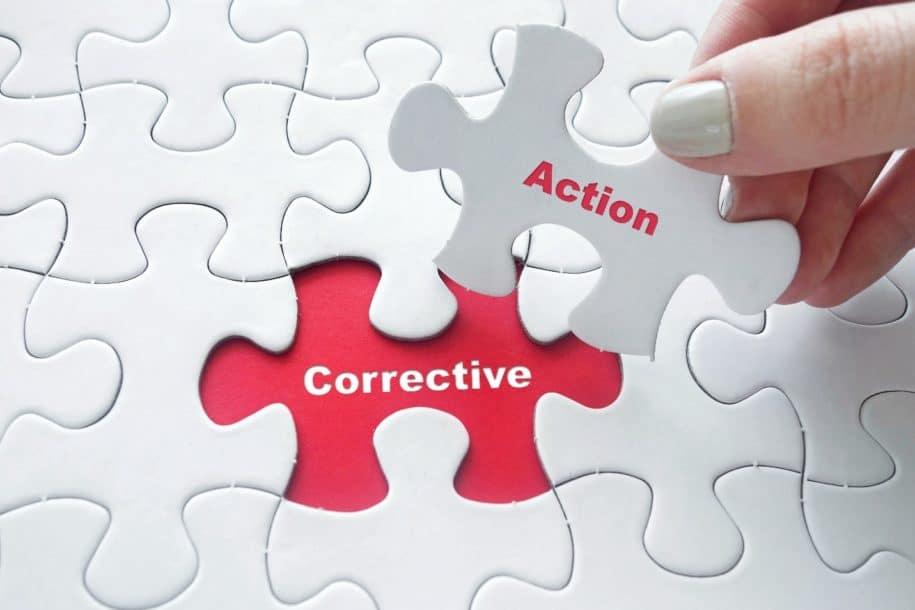If you hope to limit repeat incidents, regulatory non-compliances, lawsuits, and serious incidents you need a robust corrective management system. Audits, incident investigations, inspections, assessments and worker input all generate action items. Larger companies may have several thousand to deal with yearly. Although keeping up with your actions and commitments can be daunting, corrective actions are the basis for continuous improvement and should be seen as opportunities – not as burdens. High performance companies encourage worker suggestions and problem identification. They also understand they need an effective system, and database, to help ensure that identified issues are handled appropriately and in a timely manner. One of the surest ways to disengage the workforce is to be seen as unresponsive to their suggestions and concerns. Every company with more than a handful of employees needs, therefore, a system and tracking mechanism to help ensure that problems and improvement opportunities are dealt with effectively and don’t fall through the cracks.
Basics of Corrective Action Management
- Gather corrective action data in one place. There are multiple sources that may generate corrective actions. Any effective system needs to look at the actions as a whole, however, rather than in silos. In addition, if you have multiple data bases you may end up having to close out the same item multiple times. This tends to be needlessly time consuming and highly annoying to those responsible for closing the action.
2. Assign an owner for every corrective action. Generally, this should not be the safety staff but rather the manager responsible for the work involved.
3. Establish due dates for every corrective action. These dates should have some flexibility but when not met an explanation should be included in the database. Your database should also help you see how many actions are overdue and by how much.
4. Prioritize the corrective actions. Not every action has the same importance or urgency. To direct finite resources to where action is most needed a priority system for corrective actions is highly advisable. A simple system of prioritization (e.g., High, Medium, Low) will suffice for many companies but larger organizations may find more detailed categories useful.
5. Use the data. Like anything worth doing, corrective action management requires attention and follow-up. Corrective actions should be reviewed regularly to ensure that they are addressed in a timely manner and appropriately closed. Delinquent actions, especially high priority actions, should be flagged and explained. Overall delinquency rates should be examined as well. Since corrective actions should generally be assigned a management owner, the data review should be conducted by management as well. Safety staff can, and should, help but should not take on corrective action responsibility by themselves. Company management is ultimately responsible for disposition of corrective actions. Safety organizations make a mistake when they attempt to manage the corrective action process for those truly responsible rather than with those responsible. There are many ways to conduct these reviews and some suggestions will follow in a subsequent article.
Companies that embrace corrective action input as an opportunity to improve, and that effectively manage that input, not only enhance safety and operational efficiency but significantly lessen their risk of unpleasant safety and regulatory surprises. Perhaps more importantly, these companies demonstrate to their workforce that they take safety, and their employee’s input, seriously. If you hope to acquire, and sustain, worker engagement this demonstration of care and respect is crucial.
For more details: Click here & Contact SafetyStratus Now.
AUTHOR BIO

Mr. Loud’s over 40 years of safety experience includes 15 years with the Tennessee Valley Authority (TVA) where he served as the supervisor of Safety and Loss Control for a large commercial nuclear facility and later as manager of the corporate nuclear safety oversight body for all three of TVA’s nuclear sites. At Los Alamos National Laboratory he headed the independent assessment organization responsible for safety, health, environmental protection, and security oversight of all Laboratory operations.
Mr. Loud is a regular presenter at national and international safety conferences. He is the author of numerous papers and articles. Mr. Loud is a Certified Safety Professional (CSP), and a retired Certified Hazardous Materials Manager (CHMM). He holds a BBA from the University of Memphis, an MS in Environmental Science from the University of Oklahoma and an MPH in Occupational Health and Safety from the University of Tennessee.



